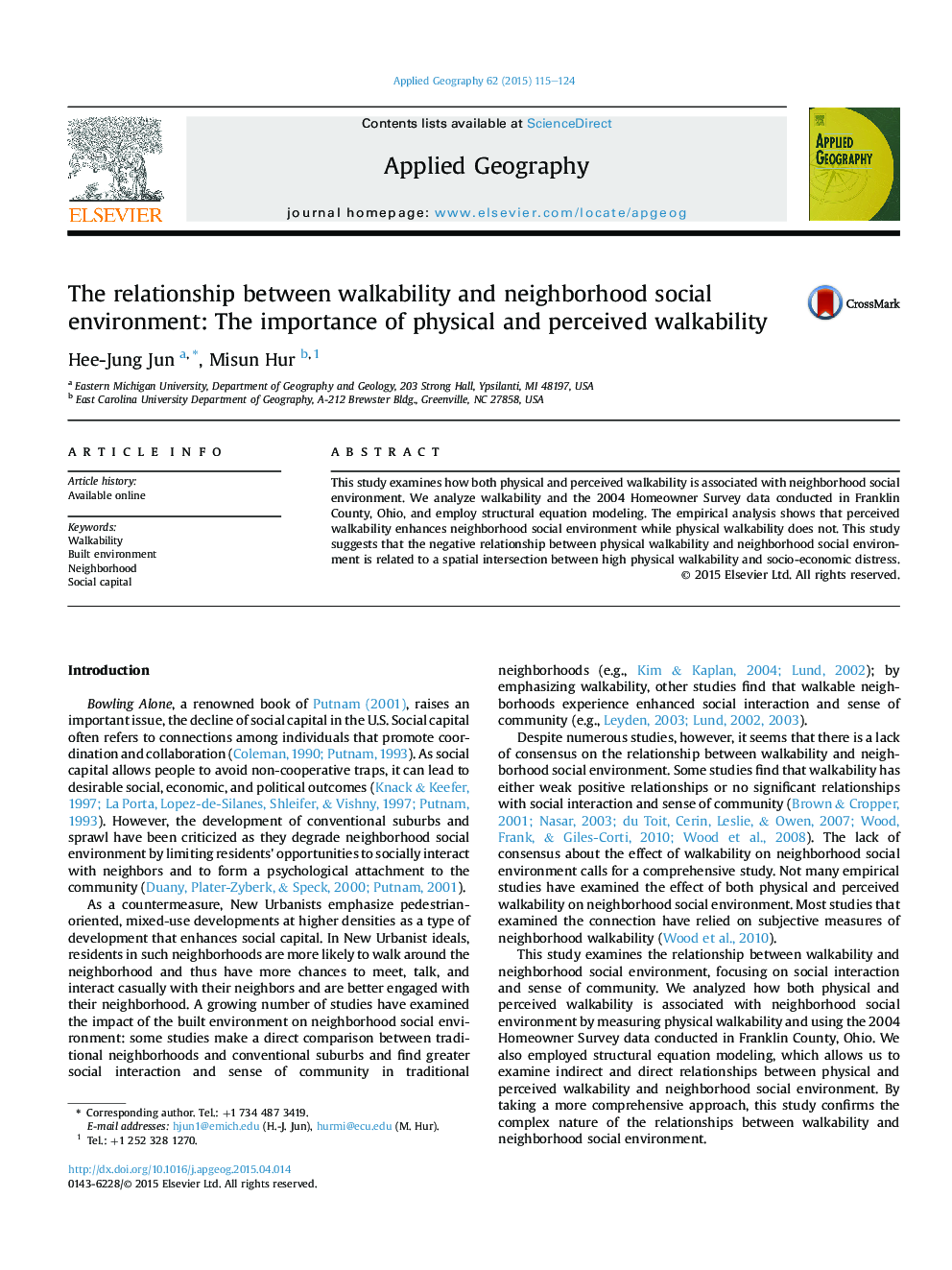| Article ID | Journal | Published Year | Pages | File Type |
|---|---|---|---|---|
| 6538498 | Applied Geography | 2015 | 10 Pages |
Abstract
This study examines how both physical and perceived walkability is associated with neighborhood social environment. We analyze walkability and the 2004 Homeowner Survey data conducted in Franklin County, Ohio, and employ structural equation modeling. The empirical analysis shows that perceived walkability enhances neighborhood social environment while physical walkability does not. This study suggests that the negative relationship between physical walkability and neighborhood social environment is related to a spatial intersection between high physical walkability and socio-economic distress.
Related Topics
Life Sciences
Agricultural and Biological Sciences
Forestry
Authors
Hee-Jung Jun, Misun Hur,
